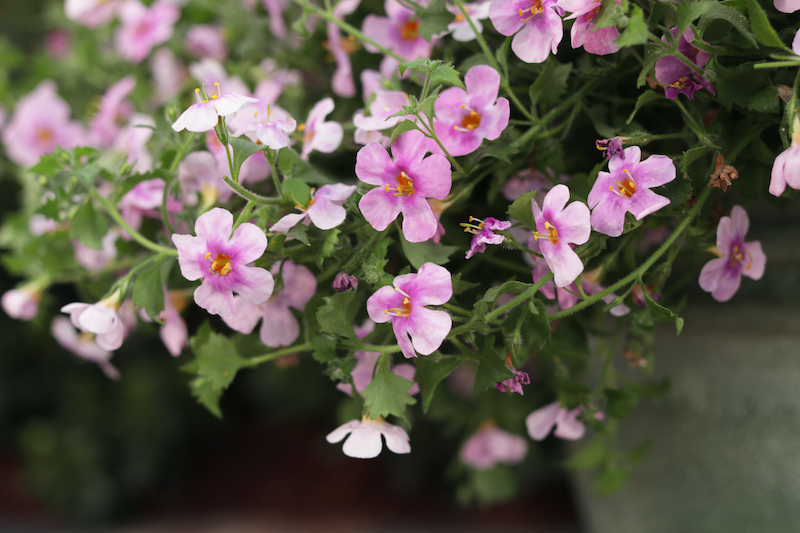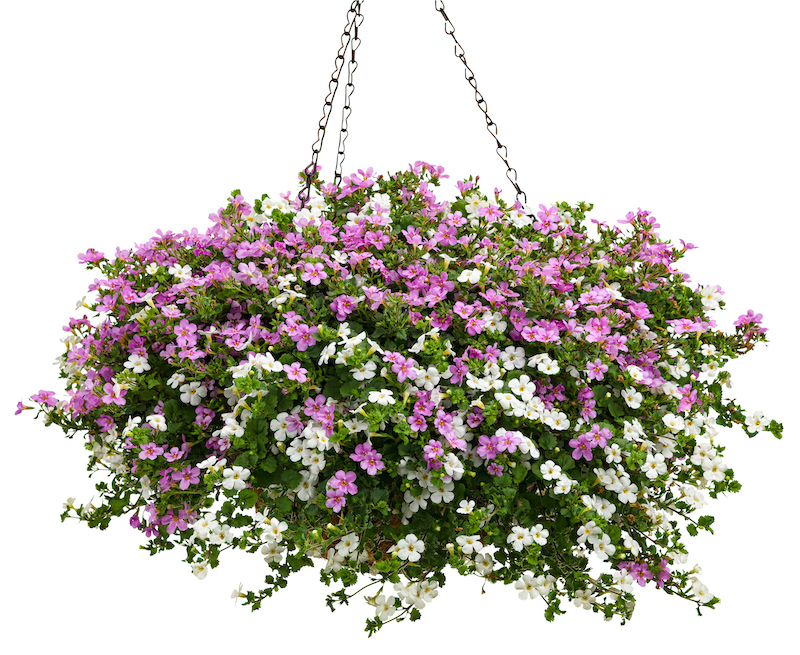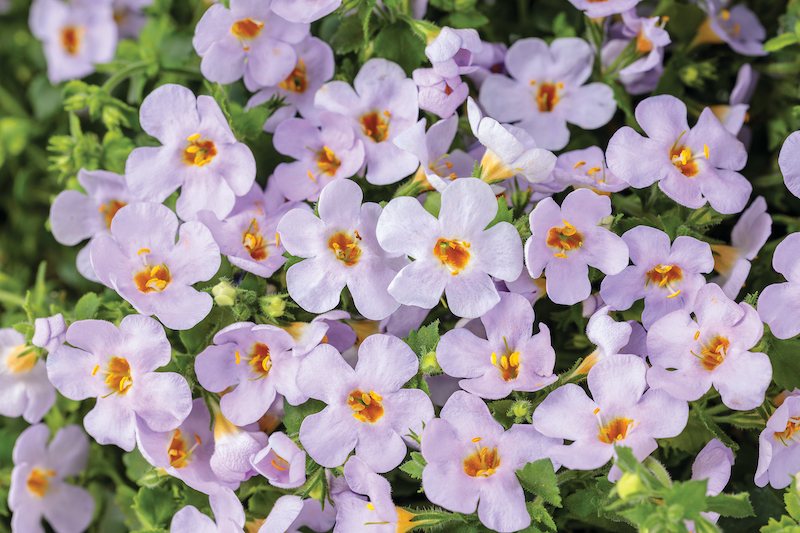Bacopa, otherwise known as Sutera cordata, is a fast-growing plant. Cutting it back will rejuvenate the plant and encourage new growth and flowers. This is especially true if the plant has become leggy in midsummer. Trimming or cutting back dead stems from the underside keeps the plant healthy and helps prevent disease.
While deadheading is not necessary, you can remove wilted flowers. Deadheading is mostly useful for tidying younger plants because bacopa has self-cleaning flowers and will continue to bloom profusely even without deadheading.

When to Prune Bacopa
Mid-summer is a good time to prune your bacopa if the lower branches have become woody or if it is producing fewer flowers. Bacopa is hardy zone 9 and above and can be cut back again in the fall to tidy leggy growth.
In the spring, pinch off the tips of each stem when new growth is emerging. This encourages branching and will produce a fuller bacopa plant.

Why Prune Bacopa
Pruning your bacopa will promote more branching, help prevent disease, and encourage more blooms. Bacopa can become leggy around the middle of the growing season, and trimming the stems will promote a fuller shape. This plant can become overgrown quite quickly, so pruning can also help you keep your bacopa from taking over the garden.

How to Prune Bacopa
Step 1 - In the spring, pinch off the tips of each growing stem as growth begins for the season.
Step 2 - In mid-summer, cut your bacopa back by about a third if it looks unruly.
Step 3 - Remove any dead branches from the underside of the plant.
Step 4 - Remove wilted flowers from younger plants during the growing season by trimming or pinching them out. Get rid of the entire flower just above the nearest set of leaves.
Step 5 - Prune lightly again in the fall if you live in zone 9 or above.
Bacopa Pruning Tips
- Deadhead regularly to encourage the plant to flower throughout the season.
- Pinch tips of each stem in the spring to encourage lateral branching and denser foliage.
- If you live in zone 9 or above, you can trim bacopa again in the fall.
- If you live in a cooler zone, take your cuttings inside in the fall and propagate them indoors during the winter.
 |
Author Chris Link - Published 12-16-2022 |
